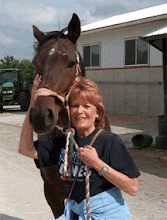Circumventing the Wishes of Congress and the American Public: BLM Moves Forward with Massive Removals of Wild Horses



Thursday, 27 August 2009 13:43
COLORADO SPRINGS, CO- August 28, 2009: The Cloud Foundation and Front Range Equine Rescue have filed a lawsuit and a request for an injunction in Federal Court in Washington, DC to prohibit the Bureau of Land Management from removing horses from the Pryor Mountain Wild Horse Range, and to stop the unprecedented round up of the Pryor Wild Horses slated to begin September 1, 2009.
The appellants argue that this removal of 70 horses will leave this unique and historical herd genetically non-viable and unable to sustain itself into the future. According to noted equine geneticist, Gus Cothran, Ph.D. of Texas A&M University, “… a census population of 150-200 is required to achieve the minimum effective population size…. The [Pryor Mountain Wild Horse Herd] has been one of the most important and visible herds within the BLM Wild Horse Program and it is important that it stays viable.”
The Bureau of Land Management is circumventing Congress’ wishes that wild horses be protected in the American West. The House just passed the Restore Our American Mustangs (ROAM) act and the Senate will review this bill (now S.1579) when they return from recess in September. “Is BLM just trying to do as much irrevocable damage to America's wild horses as fast as they can before the Senate can act?” asks Ginger Kathrens, Volunteer Executive Director of the Cloud Foundation.
“Right now there are twelve entire herds being eliminated from 1.4 million acres near Ely, Nevada because these lands are suddenly not appropriate for wild horses,” Kathrens continues. “However, no action has been made to reduce cattle grazing in these areas.” There are no grazing permits in the Pryor Mountain Wild Horse Range and reasons for holding an unprecedented removal this year are not clear. The range and adjacent lands are in excellent condition following three years of drought-breaking precipitation.
Cloud and the wild horses of Montana’s Pryor Mountains are world famous but fame and an outcry from the American public does not seem to impact the BLM’s plans. There are currently only 190 wild horses (one year and older) living in the spectacular Pryor Mountains. The BLM plans to remove 70 of them, including young foals and older horses who could be sold directly to killer buyers.
The Pryor Mountain wild horses are descendants of the Lewis and Clark horses who were stolen by the Crow Indians in the early 1800's. George Reed, Secretary of Cultural Education for the Crow Tribe Executive Branch, wrote in 2006: “We advocate preserving our heritage, culture and language, and these Pryor wild horses are part of our culture.”
The Cloud Foundation
719-633-3842
 Email
Email






